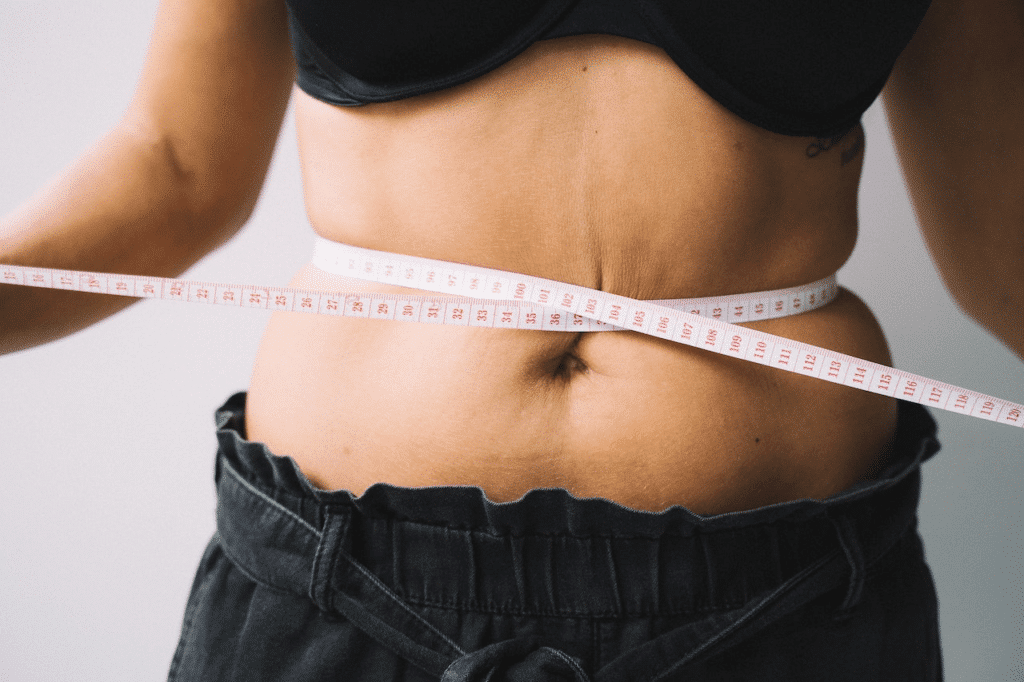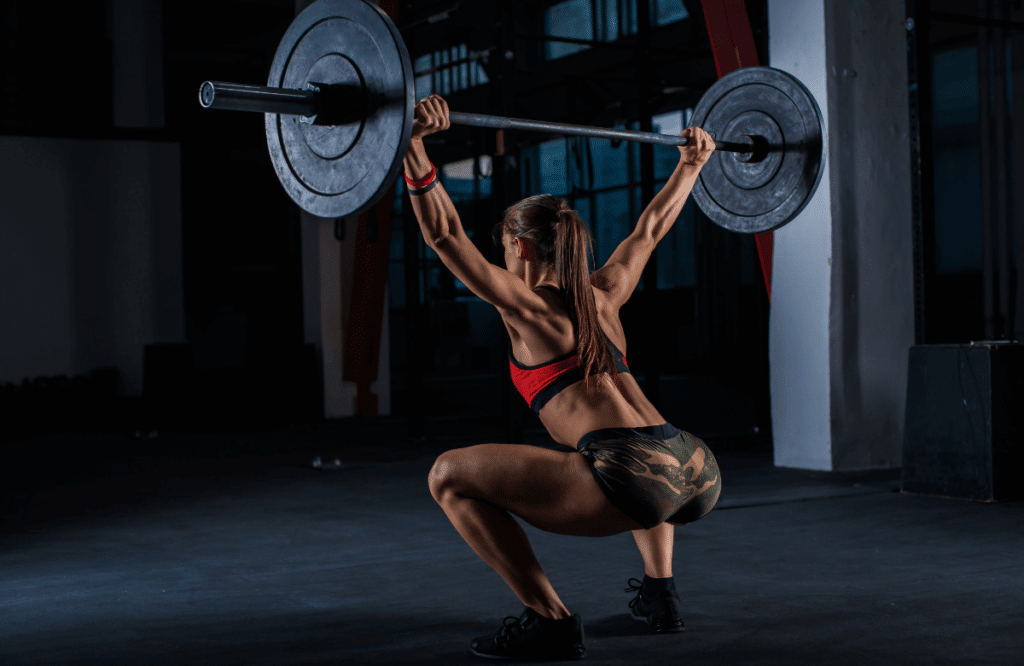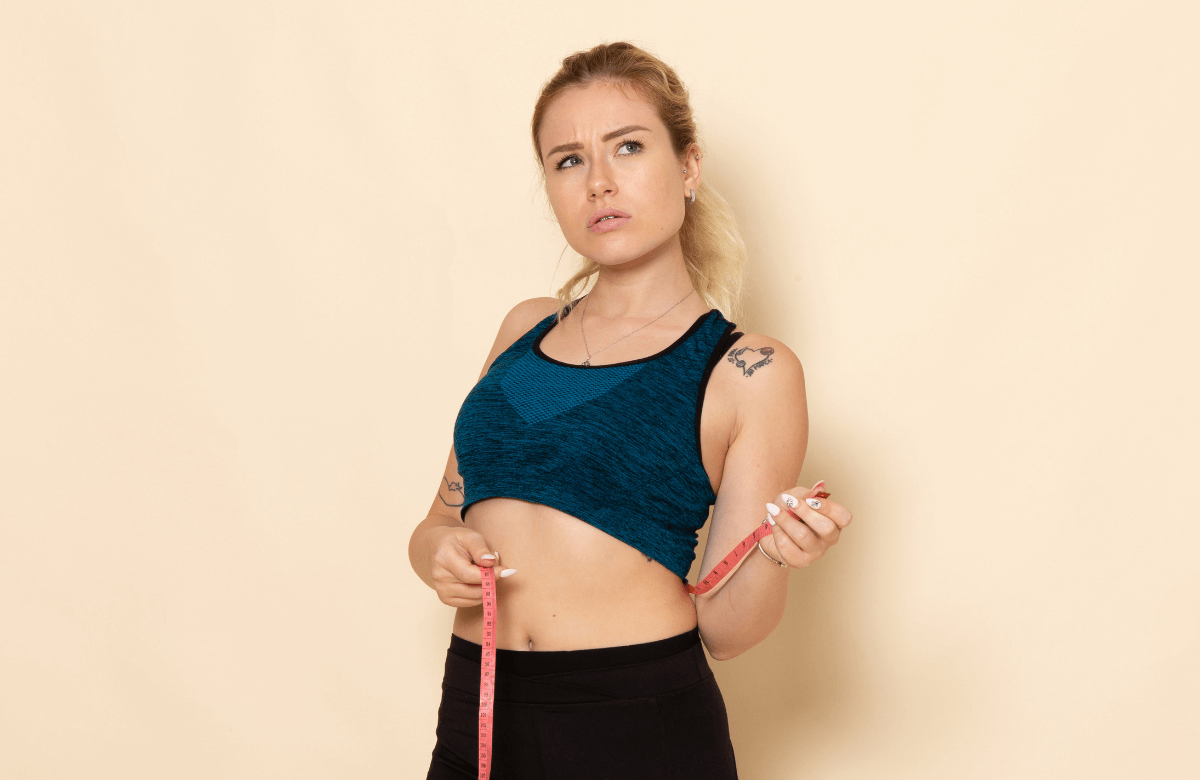It’s a question many women think about but nobody really talks about. What’s the average waist size for women, and where do I fit in? The stark contrast between skinny runway models and plus-size models also makes it much more difficult to know what’s right and what’s not!
It’s also something many women might worry about when they start gymming… Will my waist become too bulky if I do ab exercises?
Which is why we decided to address it. Here’s everything you should know about the average waist size for women, what’s considered bad and what’s considered normal, what can affect your waist size, and how to trim down if you need to.
Jump to:
- What Is the Average Waist Size for Women?
- Does the Average Waist Size Differ Per Country?
- What Should Your Waist Measurement Be?
- Health Risks of a Larger Waist Size
- What Factors Affect Waist Size?
- Why Knowing Average Waist Sizes Is Important
- Will My Waist Get Bigger if I Work Out?
- Tips to Trim Your Waist
What Is the Average Waist Size for Women?
Before we get into the finer details, there’s one thing we want to make clear. Waist size differs based on various factors, and there is no single figure that’s considered “normal”.
That being said, the average waist size for American women, according to the CDC’s data from 2016, is 38.7 inches (98.3 centimeters).
To determine an “average”, thousands of women’s waist sizes are measured and all those numbers are added together. Then, that total gets divided by the number of women involved, landing on one number. Which means that the average number could be way higher than yours, or it could be lower than yours.
You should also take into account the fact that the average height for adult women in the US is 5 foot 3 inches, and the average weight is 170 pounds. Also, the average waist circumference for teenagers is just under 33 inches, and for those over 60 it’s 39.9 inches.
It’s worth noting that although this data is a few years old, the average waist size for women has increased from the previous decade’s data—likely due to more processed foods and less movement!

Does the Average Waist Size Differ Per Country?
Yes! The above sizes are the averages for the United States population. However, the average waist size does vary by country, due to a number of factors. Things that could influence waist size in different countries include:
- Dietary habits
- Genetic factors
- Level of activity
Studies suggest that Asian women tend to have smaller average waist sizes than US and European women. However, there’s not much specific comparison between different nationalities, so it’s hard to really get a solid idea of why the average waist sizes for women differ so much from country to country.
What Should Your Waist Measurement Be?
It’s important to note that there’s no ideal waist measurement everyone should be aiming for here. Your height-to-waist-size ratio will be the best way to figure out what’s right for you. The average size isn’t always the ideal size for every woman, so this is the best way to figure out where YOU stand.
Here’s how it works:
- Measure your waist in inches.
- Measure your height in inches.
- Divide your waist number by your height number.
- Multiple the answer by 100.
- This is your waist-to-height ratio (%).
Once you have this number, you can match it up to the table below to figure out if you’re at your ideal waist size or if you have some work to do.
| Waist-to-Height Percentage | Risk Status |
| Less than 42% | Underweight |
| 43 to 48% | Healthy body weight |
| 49 to 57% | Overweight |
| 58% or higher | Obese |
How to Measure Your Waist
It’s important to find the right spot to measure your waist. Everyone’s definition is different, but the most accurate place to measure is halfway between the bottom of your ribs and the top of your hip bones.
Find that point on your own abdomen. It should be just above your belly button. Place one end of your tape measure here and run it around your body, bringing it around your body so you’re holding the other end in your other hand.
Exhale and then place the tape measure down to measure yourself. It shouldn’t be so tight that it cuts into your skin, but also not so loose that it’s hanging. Try to make sure it’s running across your back at roughly the same height that it is in front!
We recommend measuring three times and then taking an average, just to account for small placement differences. This is the correct way to measure your waist for the most accurate results.

What Is Body Mass Index (BMI)?
BMI is a common metric used to assess whether or not a person is overweight. It’s determined by this calculation: your weight (in either pounds or kilograms), divided by the square root of your height (in the matching metric, feet or meters).
The problem with Body Mass Index is that it’s not the most accurate. That’s because it doesn’t distinguish between muscle and fat—so according to BMI, a lean, muscular person has a high likelihood of being classified as obese!
Either way, BMI doesn’t play much of a role in your waist size or your body composition. Rather focus on your height-to-waist ratio for a more accurate view of your health.
Health Risks of a Larger Waist Size
While there are plenty more factors to health than just your waist size, a larger waist circumference can be an indicator of health issues. Those with extra fat in the abdominal area in particular are more likely to suffer from:
- High Blood Pressure
- Type 2 Diabetes (and insulin resistance)
- Heart Disease
- Metabolic Syndromes
- High Cholesterol
- Glucose Intolerance
- Mental Health Issues
Excess abdominal fat can put you at higher risk of developing these conditions, not just as you age but even for younger people! This is why it’s important to drill down into what’s behind your waist size so you can begin to take steps to reduce potential health risks if you fall outside of the healthy measurements.
What Factors Affect Waist Size?
Let’s take a look at the factors that affect waist size. Some of these are out of your control to an extent, but generally, you can take an active role in balancing out these factors and your waist size should improve.

Genetics
Ah, genetics. Many people assume that they’ve just “got bad genetics”, so they’re doomed to have a large waist or XYZ forever. But there is good news—while genetics do play a role, it’s much less than you might think.
Genetics typically are responsible for your shape rather than body size. Some women have a “pear-shaped” figure, which expands at the hips and buttocks. Others are more “apple-shaped”, with less definition between the upper and lower body. Still others have an “hourglass-shaped” body type, which means they have a wider torso, a thin waist, and widen again in the hips.
But whatever shape you are, you CAN still lower your waist size if it’s above average. Don’t assume your genetics will leave you with an oversized waist forever!
Hormones
Hormonal imbalances can cause you to gain fat in unusual places, widening your waist. Unfortunately, especially for women, it’s easy to inadvertently cause your own hormones to go out of whack.
Poor diet, lack of exercise, high stress levels, and various kinds of medication can wreak havoc on your hormonal levels. While hormone fluctuations are normal and some disruption is to be expected on a regular basis due to menstruation, most women don’t realize that hormones could be behind their larger waist size.
Diet and Exercise
Eating more calories than you’re burning will cause you to gain fat. One of the problems with diet is that unhealthy, processed food is much more convenient than healthy food! Baked goods, canned foods, takeout, and pre-prepared meals are less than optimal in terms of nutrition.
The second factor here is a lack of physical activity, which is common when your lifestyle is busy and stressful. Exercise becomes a lower priority, which means you’re usually eating more calories than you burn during a day, leading to an increasing waistline.

Pregnancy
This one is obvious! When a baby is developing inside of you, everything shifts a little to accommodate it. There’s also the fact that you’re probably eating more than usual (feeding two instead of one!), so you may be putting weight on around the waist.
Stress
Stress has so many more negative effects than most of us realize, and an expanding waistline could be one of them. There are a few reasons behind this.
Probably most commonly, high stress levels cause a bit of an upset in your hormones, which we’ve already discussed up above. Skewed levels of certain hormones can lead to unusual body shapes, including a wider waist.
However, another common stress-related issue is overeating, especially if your stress keeps you up at night. High anxiety levels, up-and-down hormones, and lack of sleep can very quickly lead to snacking on all the unhealthy, processed things.
And if your lifestyle is stressed, it’s easy for exercise to fall by the wayside. More unhealthy food, hormonal imbalances, and less movement is a cocktail for poor health… And an increasing waistline.

Why Knowing Average Waist Sizes Is Important
Knowing the average waist size for women helps you figure out where you fit in. BUT… You can’t just leave it there. Once you know your waist size, it’s a good idea to make some notes about these things as well:
- How old are you? Average waist size increases with age.
- How tall are you? If you’re tall, you likely have a naturally larger waist size.
- What culture do you belong to? Average waist sizes vary across cultures and nationalities.
If you’re older and taller and your waist size is a little higher than the average, it’s probably still within the normal ranges for you. However, if it’s still quite far out of the norm even for your age and height (judging by your height-to-waist ratio), it’s an indication of an underlying problem.
Knowing how your waist size compares to the average can help you spot signs of potential health problems and deal with them early on!
Will My Waist Get Bigger if I Work Out?
Unless you’re specifically doing hardcore oblique exercises, it’s quite hard to increase your waist size by working out . Even if you do make an effort to choose exercises that work these muscles, it’ll take a long time of hard exercise before your waist becomes noticeably thicker.
So if you’re worried about working out because it might expand your waist, don’t be! On the other hand, if you want to decrease your waist size, diet and exercise is the first step. Once you get into good habits with these two, stress is reduced, hormones become more balanced, and you may find that you’re even able to go off certain meds once you’re fitter and healthier.

Tips to Trim Your Waist
Ready to trim your waistline and stay within those good average waist sizes for women? Here’s our best tips to lose fat around the waist and start heading towards a healthy waist size. Just remember—belly fat is often the last to go, so patience and consistency will be key to success here!
Eating a Balanced Diet
Diet is possibly the most important part of all health and fitness. You can exercise all you want, but if your diet is filled with junk, you’re never going to see great results. Optimize your diet for health, fitness, and hormone balance by sticking to whole, non-processed foods as much as you possibly can.
That means no baked goods from the store, no canned foods, giving up takeout, and restricting the number of pre-prepared meals you eat. It’s not easy in the beginning, but if you can only take one step towards better health, this should be it!
Get plenty of vegetables each day. Try to eat some protein with every meal. Avoid drinking your calories (soda, energy drinks, coffee creamer, etc). Trust us… Get this right, and your waist size will shrink.
Exercise Regularly
Optimizing your diet works twice as well when you pair it with regular exercise. To shed that extra fat sitting around your waist, you need to be burning more calories than you consume every day. We recommend using an app like MyFitnessPal to track calories, and working out your daily calorie intake here.
Doing three to four cardio workouts a week can help you trim down significantly. If you want to get the most bang for your buck, try HIIT—you’ll save time and burn more calories for longer after your workout.
Don’t think running is the only form of cardio that’s worthwhile either! There are plenty of options to choose from: walking, elliptical, rowing, jumping rope, swimming, cycling, and more. Pick something that you enjoy, or switch between a few different ones!

Include at Least Two Strength-Training Sessions per Week
Cardio is great. But weight training is a MUST if you want to trim down. When doing cardio, you can burn more calories in a shorter period of time. But strength training helps you to build muscle, which significantly increases your metabolism.
That means… When you have more muscle, you naturally burn more calories every day. You’re also likely to burn more calories during cardio, as your body has to work harder to move the muscles (which weigh just as much as fat!).
We recommend at least two strength training sessions a week, one upper body and one lower body. Take it easy in the beginning, but don’t neglect it—ladies, we promise you’re NOT going to get bulky if you keep your diet on track!
Managing Stress
It’s an excellent idea to take steps to lower your stress levels. We know it’s not always easy, but start looking for small ways you can alleviate your own anxiety.
- Worried about finances? Make a list of unnecessary expenses and cancel subscriptions you aren’t using.
- Someone getting you down? Slowly ease negative people out of your life so you can focus on taking better care of yourself.
- Work stressing you out? Consider ways you can lower your workload, increase productivity… Or if all else fails, look for a new job or start your own online business!
Take some time to seriously consider what’s causing you stress and some ways to alleviate it. Don’t assume that there’s no way you can change things—you ALWAYS have the power to make positive change in your own life.
Get Enough Sleep
Not getting enough rest can negatively affect weight loss and waist size. When your body isn’t rested enough, that inevitable afternoon slump happens… Which usually means reaching for the strong, sugary coffee and a quick, convenient snack, which is a step or two backwards on your quest to trim down your waist.
The best way to avoid that is to create a sleep schedule and optimize your sleeping space. Setting a strict bedtime is the first step—but you need to stick to it! Make sure you’re deciding on times that will allow you 7 to 8 hours of sleep. For example, if you have to be up at 5AM, you should be in bed, lights off, phone down, by 10PM at the latest.
Optimize your environment by taking some time to consider what factors might be disrupting your sleep. Are you too hot or too cold at night? Find the right temperature and set it to automatically switch to that at night.
Is your room a bit too loud for comfort at night? Find ways to soundproof or reduce unnecessary noise when you’re asleep. Too much light coming in? Use darker curtains so your circadian rhythm can do its thing!













